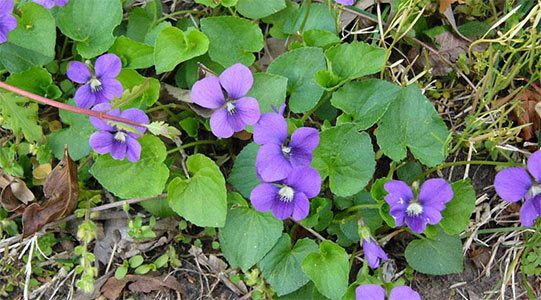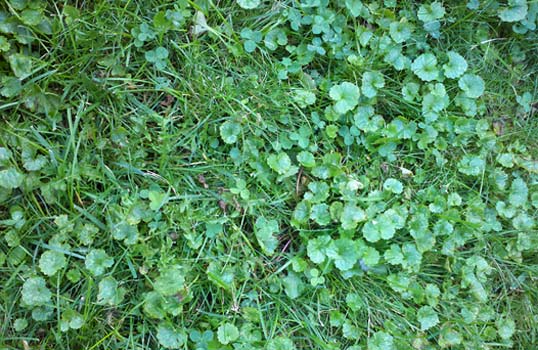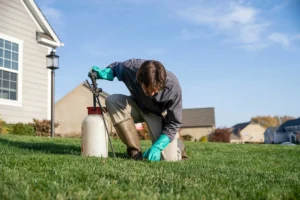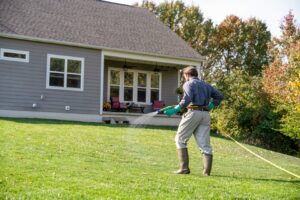Wild Violets and Ground Ivy
Wild Violets

This time of year, wild violets are one of the more active perennial weeds in the lawn. They grow fast, spread faster, and their wide leaves and purple, blue or white blooms can negatively impact lawn appearance. Though they tolerate drought well, they flourish in moist, shady areas. Typically, they flower in mid May.
One big issue with controlling wild violets is the waxy structure of their leaves, which makes it difficult for weed control to be absorbed into the plant. Another thing that makes them difficult to control is that in mid summer they flower again, with the flower being below the leaves. This results in prolific reseeding, so even small amounts of violets this year can result in larger amounts next year. Additionally, violets can spread underground, and those rhizomes (underground stems) can re-grow the plant even if the main plant is removed, so digging them up is often ineffective over the long term. Most importantly, wild violets have a strong herbicide resistance, so even non-selective herbicides are often not very effective.
Though our technicians make sure to spray wild violets with each lawn treatment, the best time to control them is autumn. Thus, throughout late spring and summer, weed control is not very effective. Established plants will not be hindered by pre-emergents, but our technicians will apply spring pre-emergents to help interdict seeds. Maintaining a lawn that is healthy and thick is the best way to limit wild violets, including seeding any thin areas in moist, shady sections of the lawn.
Ground Ivy

Ground Ivy, also known as Creeping Charlie, prefers damp, shady areas but in this part of Ohio can often be found in sunny, somewhat thin areas. This perennial weed is resistant to many herbicides, and thus can be difficult to control. It spreads through viney stems, and establishes oots at places where leaves join the stem, making hand pulling less effective. Crushing ground ivy can produce a smell similar to mint. You will notice this weed flowering in the spring.
Your technician knows that the best times to control this weed are spring and fall. However, link many resistant weeds, the more treatments applied, the greater the potential for effective control. Therefore, your technician will spray this weed any time they treat the lawn.
Homeowners can impact ground ivy prevalence by seeding thin areas aggressively, thinning trees in shady areas, and maintaining proper mowing. Most importantly, lawns should not be mowed for 3 days after treatment.





